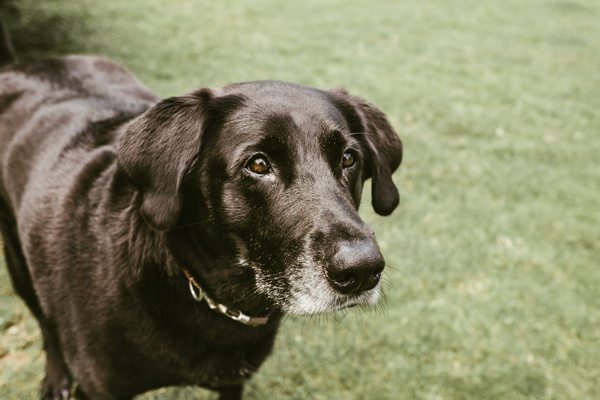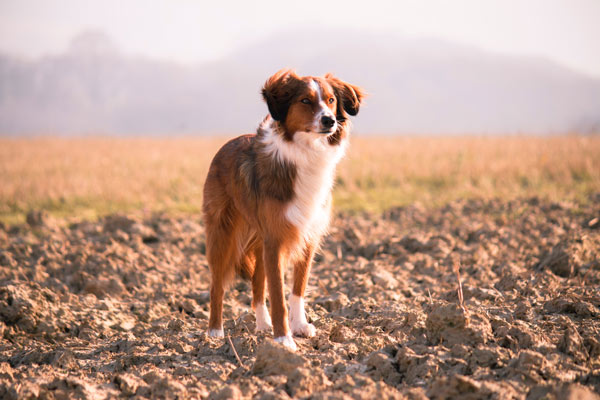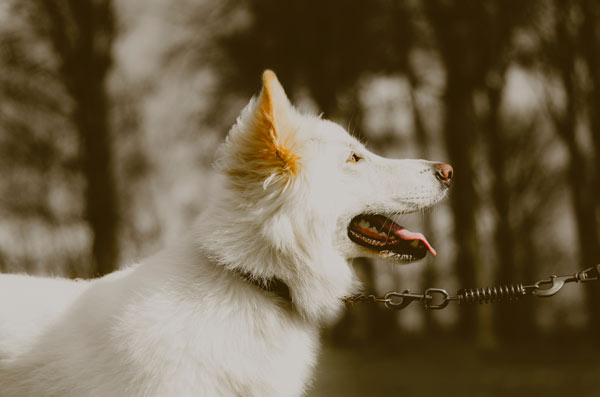Tips
Hot summer weather can be more dangerous to dogs than many pet owners realize. When a dog’s internal temperature is raised too high (generally about 106°F or 41°C), they can suffer a potentially fatal heat stroke. To keep your dog cool, make sure that they are prepared for hot weather with plenty of water and shade. If you are walking your dog, you may want to switch your usual path for a cooler, shadier trail. Driving with dogs presents its own risks, and whether you are going to the store or on a long-distance road trip, you should make sure your dog has what they need for the journey. Never leave a dog in a car alone.
Cooling Down Your Dog
Trim but do not shave their coat. Dogs’ fur is designed not only to keep them warm but to protect their skin from the sun. Some breeds have heavier coats than others, and you may want to take them to a dog groomer to have their coat trimmed for the summer months. That said, do not shave your dog, or you may leave them at risk for sunburn and overheating.
Leave a water bowl outside. If you have a backyard where your dog runs free, you should leave out a full bowl of water when they are running around in the heat. Refill this bowl every time your dog goes outside to make sure that it is cool and fresh.
Give dogs plenty of shade. Dogs will need shady areas to rest while they are outside so that they do not overheat. If you have a backyard, you might want to provide your dog with an area of shade, either by giving them a dog house, an umbrella, or by planting trees.If you are planning on taking your dog to the beach, be aware that there might not be much shade available. Sand can also become hot, burning your dog’s paws.
Avoid tethering your dog outside for long periods of time. Some dogs are kept outside tied to a tree or post. Others might wait outside while their owner goes into a shop. Either way, in the summertime, it is inadvisable to leave your dog tethered for more than fifteen minutes. If you need to go shopping, leave the dog at home
Cool down the dog if they exhibit signs of heatstroke. Symptoms of heat stroke include heavy panting, difficulty breathing, loss of energy, drooling, and any obvious weakness or stumbling.
If your dog is starting to show these signs, you can hose them down with cool (but not cold) water. If you do not have a hose, you can put your dog in the shower. As you do this, check the dog’s rectal temperature every 30-60 seconds until the temperature is down to 103.5°F / 39.8°C. The goal is to slowly bring the dog’s temperature down. You should have the dog checked out by a veterinarian.
- You can also soak rags or wash cloths in cool water.
- Place these inside of the dog’s thighs.
- Do not use cold water, ice packs, or iced water.
- These can actually prevent the dog from cooling down.
- If you do not have a thermometer or cool water available to you, go directly to the vet.
Walking and Exercising With Your Dog
Go out during the cooler hours. The early morning and late evening hours will be much cooler than the middle of the day. It is recommend to walk your dog during these hours to avoid the worst of the heat.
Walk your dog on soft ground. Asphalt can become dangerously hot during the summer, burning your dog’s paws and increasing their temperature. Instead of walking on sidewalks or blacktop, try to find dirt trails or grassy areas where you can walk your dog.
Carry a collapsible water dish. You will need to give your dog plenty of water while you walk. Plan on taking frequent breaks so that your dog can re-hydrate. Inflatable water bowls fold up easily in a backpack or pocket, and they allow your dog to drink water easily. Pour water from a bottle into the bowl so that your dog can drink at their leisure.
Rest in shady areas. If your dog starts panting heavily or stumbling, they need to rest. These may be signs of oncoming heatstroke. Find a cool, shaded area to let your dog cool off for a few minutes. Do not stop out in middle of hot asphalt or in direct sunlight. These can cause your dog’s temperature to spike.
Watch for signs of overheating. Keep an eye on your dog for signs of heatstroke. If your pet begins to tire or pant heavily, stop in a shady spot and give them some water. If symptoms don’t subside, take them directly home and seek veterinary care.










